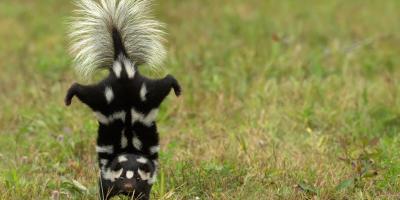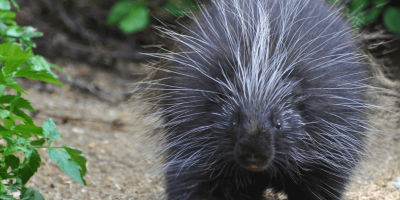How to Deal with Bats in the Winter Months

Bats are one of the most common unexpected houseguests you might find lodging in your home, if, that is, you find them at all. Bats, you see, are rarely detected for two main reasons: One, they’re quiet as a (flying?) mouse and, two, most people typically don’t access their attics -- or certainly their crawl spaces, for that matter -- on a regular basis.
Bats are nocturnal, meaning they’re most active at night. They’re often snuggled up in your home for months or even years before their presence is known. These little flying mammals are particularly attracted to old houses because access is easy through the myriad cracks, gapes and holes in and around the home.
If you’ve seen bats flying to or from your home during the warmer months but the problem seems to disappear in the winter, consider it an optical illusion. The bats are almost always still present -- they’re just much less active in winter, as they enter a state similar to hibernation.
As a federally protected species, bats cannot be physically removed from a home or business. Instead, a process called exclusion is used to rehome them. Bat exclusions are basically simple traps, but rather than being designed to keep a pest in, exclusions are made to send and keep bats out. They do this by creating a way for the bats to leave the premises while blocking any way to get back in, sort of like a one-way door.
If you do discover bats in the winter, installing an exclusion system isn’t an option -- it would effectively exterminate them. In the cold of winter, excluded bats would be stuck trying to find another place to reside. That is no easy task, and it would likely result in exhaustion from lack of food sources. Insects -- a dietary staple for bats -- are hard to come by in winter, after all.
The good news is that bats don’t cause much mischief while they sleep out the winter months. Bats don’t mate, breed, eat or defecate while it is cold, so you are fine to wait until spring to exclude them.
The existence of bats is extremely beneficial to people as well as to local ecosystems. An average bat eats at least half of its entire body weight worth of insects every night. For a 160-lb human, that would mean eating 80 lbs of food in a matter of only a few hours.
Bats’ ravenous appetite for bugs saves U.S. agriculture somewhere between $3.7 to $53 billion per year, not even counting savings on pest control.
Like bees, some bats are also pollinators. They eat nectar and spread pollen from plant to plant. Fruit-eating bats are vital for spreading seeds across the land. In addition to all of these beneficial functions, bats serve as prey for many other animals: Hawks, owls, weasel, and raccoons all dine, at least periodically, on bat populations.
Sadly, bat populations have been declining for the last decade or so due to a fungal infection called white-nose syndrome. It is estimated that millions of bats have fallen ill with WNS, resulting in hundreds of millions of insects not being eaten.
If bats have taken up residence in your home, keep in mind all of the essential functions that they serve and give us a call. We always work to act responsibly and are eager to avoid harming wildlife however possible.
Want to make sure to get on the list to safely exclude the bats come spring? Send us a message and we’ll take care of the rest!



